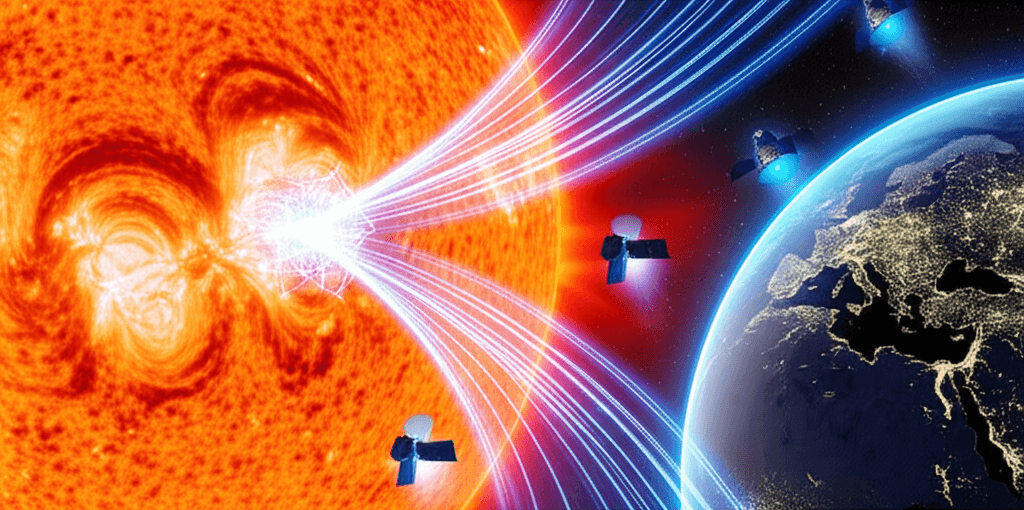IBM and NASA AI Pinpoints Solar Flares Hours Ahead to Protect Earth
Named Surya, this AI offers critical early warnings for solar flares, shielding Earth's technology from astronomical disruption.
August 21, 2025

In a significant step forward for space weather forecasting, IBM and NASA have jointly launched a groundbreaking artificial intelligence model designed to predict dangerous solar events.[1] Named "Surya" after the Sanskrit word for the Sun, this open-source foundation model aims to provide an early warning system for solar flares, the powerful bursts of radiation from the sun that can wreak havoc on Earth's technological infrastructure.[1][2] For the first time, a model can visually predict where a solar flare might occur on the sun's surface up to two hours in advance, a capability that could prove crucial in mitigating the widespread disruption caused by severe space weather.[1][3] The collaboration marks a pivotal moment in the application of AI to heliophysics, offering a new tool to safeguard everything from satellites and power grids to communication and navigation systems.[1]
The development of such a predictive tool has become increasingly critical as modern society's reliance on technology grows.[1] While the sun is 93 million miles away, its violent outbursts, including solar flares and coronal mass ejections (CMEs), can have immediate and severe consequences on Earth.[1][2] These events can knock out satellites, disrupt airline navigation, trigger widespread power blackouts, and pose serious radiation risks to astronauts in orbit.[2] The potential economic fallout is staggering; a systemic risk scenario created by Lloyd's estimates that a severe solar storm could expose the global economy to losses of $2.4 trillion over a five-year period.[1][2] Recent solar events have already provided a glimpse of this vulnerability, causing GPS disruptions, forcing flight diversions, and damaging satellites, underscoring the urgent need for more accurate and timely forecasting.[1][4]
At the heart of Surya is a massive and meticulously curated dataset, representing the largest of its kind for heliophysics research.[1][2] The AI was trained on nine years of high-resolution solar observation data collected by NASA's Solar Dynamics Observatory (SDO), which has been continuously monitoring the sun for over a decade.[5][6][7] This vast repository of information, amounting to petabytes of data, includes multi-channel imagery and magnetic field maps, allowing the model to learn the subtle precursors to solar eruptions.[7][8] Developed by a collaborative team from IBM, NASA, and other research centers, Surya is a 366-million-parameter transformer model designed to process the SDO's native 4096x4096 resolution images.[5][8] By making this powerful model and its underlying dataset, SuryaBench, openly available on the Hugging Face platform, IBM and NASA are aiming to democratize access and accelerate scientific discovery in the global research community.[1][5] This initiative is part of a broader strategy that has previously seen the release of the "Prithvi" family of models for Earth-based climate and weather projections.[2]
The new model represents a significant leap in predictive capability compared to previous methods.[5] Traditional solar weather prediction has been hampered by reliance on partial views of the sun's surface.[1] In early testing, Surya has already demonstrated a 16 percent improvement in the accuracy of solar flare classification.[1][5] Beyond simply classifying the likelihood of a flare, its novel ability to generate a high-resolution image pinpointing the potential location of an eruption up to two hours in advance is a game-changer for space weather forecasters.[4][9] This extended lead time doubles the warning window previously available to scientists.[5] The model's versatility has been tested on a range of other critical tasks, including predicting the speed of solar winds up to four days in advance, forecasting the emergence of active regions on the sun, and predicting extreme ultraviolet (EUV) spectra, which impacts Earth's upper atmosphere.[1][7]
The release of Surya signifies more than just a technological achievement; it highlights a strategic shift towards using open-source AI as a primary driver of scientific exploration. By embedding NASA's deep scientific expertise into cutting-edge AI, the agencies are empowering a broader understanding of how solar activity impacts the critical systems humanity depends on.[1][10] This approach allows satellite operators more time to protect vital spacecraft, enables power grid managers to adjust loads to prevent cascading failures, and helps ensure the safety of aviation and astronautical activities.[9] As humanity plans for deeper space exploration and our technological footprint expands, the ability to forecast the weather in space will become as essential as predicting it on Earth, making Surya a critical step in protecting our technological civilization from the star that sustains it.[1][4]